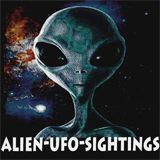Christmas Eve with the Seekers
As we’ve seen, a notion shared by apocalyptic, end-of-days cults is the presumed specialness of the cult’s followers. Cult leaders predict that the world will end, but assure followers that divine action or other intercession will ensure continued physical life. Near the end of 1954 a suburban Chicago housewife- turned-prophet named Dorothy Martin had an epiphany: on Christmas Eve 1954, the world would be destroyed by volcanoes and violent earthquakes. However, spaceships piloted by inhabitants of the planet Clarion stood ready to whisk Martin and her “Seeker” followers to safety.
Whether shy or simply concerned she wouldn’t be taken seriously, Martin chose Dr. Charles Laughead, a onetime staff physician at Michigan State College, to be her spokesman. (Although fired by MSC in December 1954 for propounding his views about sunken continents to students, Laughead earned newspaper coverage for his claim to be a saucer contactee.) The Chicago dailies and TV stations dutifully listened to Laughead and reported the story, which excited considerable interest near Martin’s Oak Brook home as Christmas Eve approached. Because neighborhood parents soon complained that their children became unmanageable after speaking with Martin, and had trouble sleeping, Oak Park police briefly considered arresting Martin for contributing to the delinquency of minors.
On Christmas Eve, Martin, Laughead, and other Seekers gathered on the sidewalk outside of Martin’s home to sing Christmas carols, their eyes flicking frequently toward the sky. Martin and Laughead reminded the waiting travelers that no metal was to be introduced onto the ship. Because of metal clasps, the assembled women removed their brassieres; men cut or pulled the zippers from their trousers. Laughead had to remove the zipper of a man who forgot.
When the spaceships failed to arrive, the group retreated inside the house. In the meanwhile, so many agitated grown-ups arrived to crowd the street that traffic was blocked; rather than arrest Martin for inciting to riot, police took her away and handed her over for psychiatric evaluation.
The unenviable task of facing the reporters fell to Dr. Laughead. He explained, not unreasonably, that the Clarions had probably been concerned about what Laughead called “the mob” of people outside the house; if their ships landed, the onlooker reaction might have been a full-scale riot.
The Christmas Eve prophecy went unfulfilled, but Dorothy Martin unwittingly inspired a mighty contribution to social psychology: a University of Minnesota social psychiatrist named Leon Festinger, and a small group of other psychologists and students, infiltrated the Seekers for two months. The infiltrators listened as Martin spoke to followers about the planet Car, destroyed when the forces of light lost a titanic philosophical battle with Car scientists inspired by Lucifer. Survivors on the side of light settled Clarion and other planets, and now, according to Martin, they dedicated themselves to warning and saving others. In order to be among the saved, a Seeker needed nothing but faith.
At one meeting attended by Festinger and his colleagues, Martin’s lecture encouraged informal, small-group discussion, which was followed by a large pink and blue cake decorated with a mother ship and a trio of flying saucers.
There is no way to disprove the reality of the Car war, planet Clarion, or spaceships. Festinger’s interest was piqued mainly by Martin’s insistence on the doomsday message even after the December 24th deadline had come and gone.
The psychologist regarded Martin’s certitude as illustrative of cognitive dissonance—the tendency of the human mind to rationalize when deeply held beliefs are empirically revealed to be false (in this case, doomsday was predicted and doomsday failed to happen). To acknowledge that one’s deeply held conviction is false can be impossible. Instead, the mind may invest the apparent failure with a counterintuitive significance that proves the original idea is correct. The Seekers reacted in this way, explaining that the prophecy went awry because the Clarions worried about the reaction of non-believers, and because Lucifer momentarily gained the upper hand. Nothing about the prediction was incorrect; mere circumstance derailed it. And what if the whole exercise had been a test mounted by the Clarions? Next time the prediction will come true.
Festinger was excited by the dynamics of the Seekers, and seized this rare opportunity to field-test his ideas about cognitive dissonance. In 1956, he and a pair of colleagues put together a book called When Prophecy Fails. Social psychologists found the book fascinating, and because of an active narrative and explanations of how cognitive dissonance related to politics, economics, and other endeavors, When Prophecy Fails found an enthusiastic lay audience. (The book assigns pseudonyms to the Seekers. A 1957 book by Festinger, A Theory of Cognitive Dissonance, discusses CD theory in broader terms.) Prior to gathering the Seekers, Dorothy Martin had investigated Scientology and Theosophy.
She committed herself to the climb toward wisdom and self- realization with study at a Dianetics (Scientology) center in Arizona. She later traveled the Andes. By the 1960s, she was in Mount Shasta, California, working with followers at her own institute, the Association of Sananda and Samat Kumara. (Whether people were attracted to the group because of the similarity of “Samat Kumara” to “Kama Sutra” is unknown.) In subsequent decades, Martin slipped easily into New Age thinking. She died in 1992, age ninety-two, in Sedona, Arizona.
